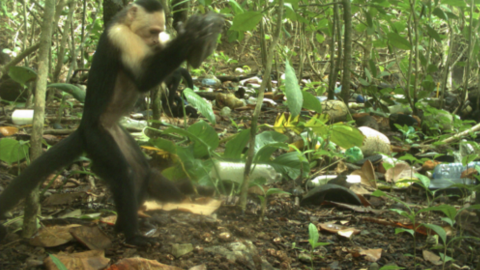Panamanian monkeys have begun to pick up stones, use them as tools, enter their own mini Stone Age

It may be hard to believe, but for 4,262 million years or so, it was f**king rocks that stumped our ancestors. How do they work? Where is the ‘on’ button? Why so many sizes? But approximately 2 million years ago some prehistoric early human descendant picked up a rock and started using it as a tool. Like a bad meme or terrible fashion trend, it caught on quickly. Pretty soon, everyone wanted their own rock and before long your very, very early grandparents had begun sharpening them and using them for hunting. It was a glorious time.
There are only 3 known species of non-human primate that use tools: chimpanzees, bearded capuchins, and long-tailed macaques. This population of white-faced non-tufted capuchins on the island of Jicarón off of the coast of Panama has been independent from their tufted brethren for the last 6 million years, roughly as long ago as our last common relatives of the bonobo and chimpanzee. The BBC has a great round-up of non-human primate tool-use, if you’re interested in reading more on the subject.
This is a fairly big event, in the grand scheme of things. While it’s fairly easy to go on YouTube and find lots of videos of primates using tools, keep in mind that this is a wild population, and that captured animals seem to develop tool use much faster as there’s an abundance of time, materials, and zero predators. Researchers believe that this population of capuchins is unique because of the Jicarón island’s lack of other ground-based natural predators, meaning that the capuchins have a ton of time to work on the ground and perfect their tool use.
What makes the finding even more interesting is that it hasn’t caught on with the rest of the island yet, despite similar habitats. Only a few males on a particular part of Jicarón have developed it, and it does seem to be a learned skill.
Perhaps these early hip monkeys, clearly super-cool, with-it, and ahead of the curve, can spread the tool use? That’s arguably what happened to us some 2 million years ago. We just got remarkably lucky as a species and evolved over many, many millennia into the super-intelligent naked apes that we are today.




